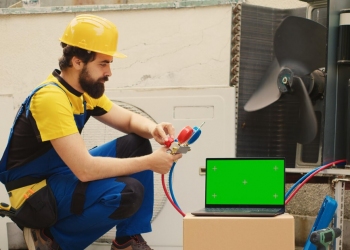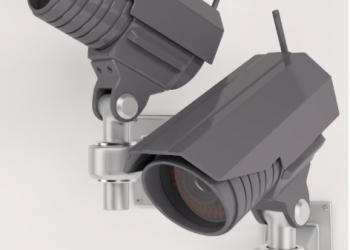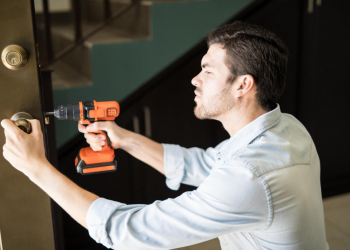Focus: Maritime Safeguarding (ports, terminals, shipyards)
At a modern port, every minute of downtime ripples across vessels, yard equipment, truck gates, and rail. A ransomware lockout of a crane HMI or Terminal Operating System (TOS) can halt discharging, strand containers, and trigger penalties. The answer isn’t only better prevention—it’s a backup-and-recovery design that brings safe operations back in minutes.
For teams comparing concrete options, explore a cyber resilience platform and approaches for cyber attack Recovery.
Why maritime operations are uniquely exposed
- Distributed critical assets: STS/RTG cranes, yard tractors, reefers, weighbridges, gates, VTS, and port security—often on mixed networks and legacy OS.
- Tight process coupling: If TOS, access control, or radio handheld services fail, cranes and gates quickly stall.
- Challenging environments: Harsh conditions and remote quay locations complicate on-site rebuilds.
- High consequence: Vessel delays, berth conflicts, demurrage, and safety risk at the quay.
Recovery objective: minutes, not days
Design for:
- Tiered restoration that prioritizes crane control and gate throughput.
- Image-level restores for HMIs/servers to avoid lengthy rebuilds.
- Immutable + offline copies resistant to ransomware and wipers.
- Portable recovery at the quay when the production network is quarantined.
- Evidence & drills that satisfy security and maritime compliance expectations.
Field rule: 3-2-1-1-0 — three copies, two media, one offsite, one immutable/offline, and zero errors in test restores.
Reference architecture (maritime-ready)
1) Production ➜ Vault (hot ➜ warm)
- Frequent, application-consistent snapshots for TOS, databases, license/identity.
- Image backups for crane HMIs, engineering workstations, and server VMs.
- One-way replication into a segmented vault with RBAC, MFA, delayed deletes, and tamper-evident logs.
2) Offline / air-gapped (cold)
- Rotated, fully offline copies with signed manifests to survive ransomware and insider threats.
3) Portable “dockside” recovery
- Rugged unit pre-loaded with golden images for common crane cabins, gate PCs, and yard workstations.
- One-click bare-metal restore to approved spares—even on a temporary, isolated switch at the berth.
Asset-specific guidance
- STS/RTG Cranes:
Back up HMI images, PLC/drive configurations, network settings, and vendor toolchains. Target <15–30 min to reimage a crane console and validate interlocks. - TOS & Yard Systems:
Image + application-consistent backups for TOS, DBs, message brokers, and API gateways. Ensure quick failover or instant-recovery to restore job orchestration. - Gates, Weighbridges, Access Control:
Backup of workstation images, peripherals (badge/biometric/scale drivers), and policy databases. Restore gates early to keep truck flow moving. - Network & Security Devices:
Versioned exports of switch/router/firewall configs; keep a printed “last-known-good” for worst-case rebuilds.
Tiered restoration order (example)
TierPriority systemsRPORTOOutcome0Identity (AD), time/NTP, jump hosts15–30 min30–60 minTrust foundation1Crane HMIs, gate PCs, yard workstations15–60 min<15–30 minResume safe moves & gate flow2TOS, DBs, license servers1–4 hrs1–6 hrsRestore orchestration & visibility3Analytics, reporting, non-critical apps24 hrs24–72 hrsOptimize operations
Golden rule: restore control and flow first; analytics can wait.
Day-of-incident playbook (port-friendly)
- Contain affected VLANs; preserve forensics.
- Establish trust boundary: boot the portable unit; verify signed images.
- Restore Tier 0 in an isolated enclave.
- Bring back Tier 1: reimage crane HMIs and gate PCs; verify safety interlocks and peripherals.
- Stabilize yard flow: coordinate manual worklists while TOS returns.
- Restore Tier 2: TOS/DBs and integrations; rejoin segments gradually.
- Harden: rotate credentials/keys; re-baseline golden images.
- Debrief: capture actual RTO/RPO; update quay and gate runbooks.
60-day rollout
- Weeks 1–2 – Discover & prioritize: inventory cranes, gates, servers; define RPO/RTO by tier.
- Weeks 3–5 – Build: deploy segmented vault with immutability; create image + app-consistent jobs; script one-way replication; prep the dockside kit.
- Weeks 6–7 – Prove: live drill—restore one crane HMI and a gate PC; instant-recover a TOS instance; record evidence.
- Week 8 – Harden & handoff: enable MFA/four-eyes deletion; finalize offline rotation; laminate berth/gate run cards.
KPIs the harbor master cares about
- Crane console restore time (median minutes to HMI).
- Gate throughput recovery (time to reopen lanes).
- Immutability posture (days since last verified offline copy).
- Coverage (% of Tier-1 assets with current images/configs).
- Drill success rate and audit evidence freshness.
Where to go next
If your current plan still assumes “we’ll rebuild when the vessel sails,” it’s time to shift to minutes-class recovery for quay and gate operations. Start with a readiness assessment and a live restore drill. For solution patterns that make this practical, see a cyber resilience platform and options for cyber attack Recovery.
Bottom line: Ports win by restoring control and flow fast. With immutable backups, offline copies, and a dockside recovery kit, maritime operations can keep ships moving—even under cyber fire.









